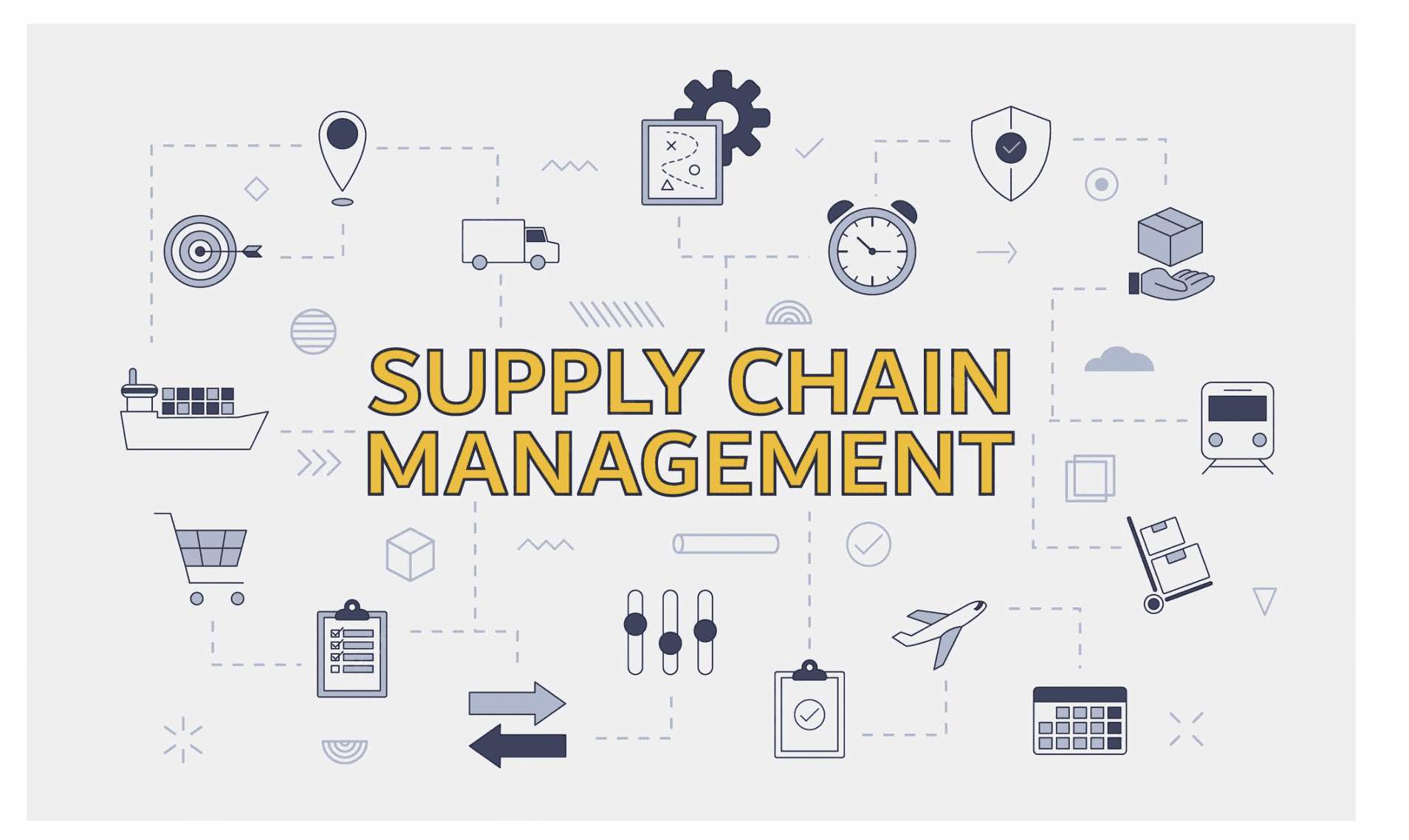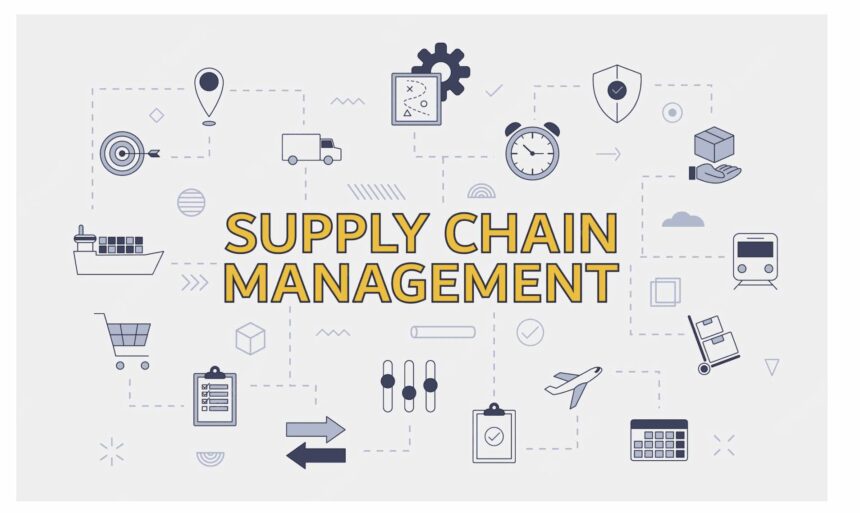
Introduction
Like many others, the supply chain industry is poised for an artificial intelligence revolution. Supply chain operations can benefit significantly from the capabilities of AI, which is growing in speed and accuracy. From predictive analytics to demand planning, many operations can be optimized with the help of AI technology.
Whether you’re a supply chain manager, a logistics professional, or an analyst looking to gain insights into your industry, it’s important to understand AI’s role in supply chain management. This post will explore some of the key applications of AI technology in supply chains, as well as some of the challenges and opportunities that this exciting new field presents.
Succeeding In The AI Supply-Chain Revolution
Before we dive into the specific applications of AI in supply chains, it’s important to understand what makes this case such a promising opportunity. For starters, the entire supply chain industry is highly data-driven. Any supply chain manager will tell you that successful operations rely on access to large amounts of data on shipments, inventory levels, transportation routes, and more.
But beyond having access to lots of data, other factors in supply chain management are conducive to applying AI technology. From business planning to predictive analysis, countless activities in supply chains lend themselves well to automation.
The Changing Face Of Supply Chain Management
It’s also crucial to acknowledge the major changes that are already happening within the supply chain industry. Firstly, COVID-19 has dramatically altered global supply chains, forcing many businesses to rethink how they do everything. Supply chain disruptions and factory shutdowns have put a pause on planned production and distribution, leaving many businesses with suboptimal service levels.
As such, supply chain leaders are scrambling to quickly identify alternative routes and suppliers, all while optimizing transportation costs and ensuring that customers still receive the products they need. Bad actors take advantage of this vulnerable time, selling fraudulent products and bilking suppliers for high prices.
On top of that, environmental and social issues are also influencing supply chain operations. Climate change is forcing many companies to rethink their supply chains, desperately trying to reduce their carbon footprint.
A Crowded Solution Landscape
An intelligent supply chain network starts with a comprehensive supply chain management solution. And while there is no shortage of AI-based solutions, not all will successfully help supply chain performance. Choosing the right solution can be daunting for many businesses, but it’s an essential investment if you want to create the most competitive supply chain network possible.
With an increase in available solution options, it’s essential to carefully assess your business needs and the capabilities of each solution. Most of them are built on prediction models and correlation algorithms, and each solution will have its pros and cons. Ultimately, the success of your supply chain operations will depend on finding the right mix of efficiency and adaptability.
Embarking on an AI-Driven Transformation
Supply chain companies interested in harnessing the power of AI need to be logical, progressive, and strategic. Here are four steps they can take when embarking on this AI-driven transformation:
Value-creation Identification, Strategy, and Roadmap
First, remember that all functions within a supply chain are interconnected and that a successful AI strategy will require input from all stakeholders. This means working closely with procurement teams, manufacturers, logistics experts, and more. Together, you can identify critical points of value creation and create a strategy for implementing AI-driven solutions that will streamline operations across the entire network.
Use real-time data for your analysis of supply chain forecasts, and have an end-to-end view of the entire process. A roadmap that clearly defines the steps and resources necessary to achieve your goals will help you prioritize efforts and map out a timeline for implementation.
Design of Target Solution and Vendor Selection
Supply chain management systems cannot be a digital twin of another system. Instead, an AI-driven solution should be designed specifically for your business strategy and the available data. This will allow the system to identify patterns and relationships in your data that may not have been obvious without machine learning algorithms.
When selecting a vendor, business process updates, new functionality, and ongoing maintenance should all be considered. Otherwise, they will try to sell you a one-size-fits-all solution that may not be suitable for your company.
Implementation and Systems Integration
Supply chain businesses must also be proactive about integrating their AI-enabled solutions with other key systems, such as shipping and accounting platforms. Doing so will allow for a seamless transition and enable the system to collect data from multiple sources. It will also minimize any supply disruption that may result from integrating the new solution.
For instance, a centralized database could help your business update delivery status and pricing information automatically. Unfortunately, very few companies have experience implementing organization-wide AI solutions. As reported by the recent McKinsey study, only 25% of supply chain leaders feel like their needs align with system integrators’ incentives.
Change Management, Capability Building, and Full Value Capture
As with most AI-related things, human intervention will always be necessary for successful implementation. For supply chain companies, a deep level of change management will be necessary to drive full value capture.
That means investing in the right people and training them to use the new system effectively. You should empower them to make data-driven decisions across the entire network. It also means communicating your vision and overarching objectives clearly.
Everyone must be working towards a common goal. A detailed-oriented analysis of the latest AI trends and innovations in supply chain management can help you develop the best strategy for your logistics network.
AI in Supply Chains – The Business Advantages
The benefits of AI supply chain improvement are numerous and far-reaching. By using sophisticated analytics and machine learning algorithms, supply chain companies can ensure the following:
Anticipating Supply Problems
Demand forecasting is one of the key areas where AI can have a major impact. Companies need to know an abnormal demand spike is coming, so they can prepare in advance and avoid any major disruptions to the supply chain. Future demand predictions can be made more accurately by using advanced algorithms.
Predictive analytics and machine learning use real-time data to track market trends. These accurate demand forecasts can then be used to optimize product allocations and inventory and plan for future demand needs. In short, demand forecasting models can help companies stay ahead of potential supply problems before they cause damage to their bottom line.
Warehouse Efficiency
AI-integrated supply chain software can provide real-time visibility into warehouse operations. You can see which zones are the most congested and identify areas for improvement based on machine learning algorithms. Stocking recommendations and space utilization predictions can also be generated based on historical data and machine-learning techniques.
As for inventory management, companies will be able to cut costs on product wastage and overstock by automating inventory control. Eventually, the warehouse manager will trust a computer program to make these crucial inventory decisions, so they can focus on other aspects of supply chain management.
Maintenance recommendations, quality control, and order picking can also be automated using AI supply chain solutions.
Enhanced Safety
Supply chain companies are highly concerned with safety, as any accident could have major repercussions on their company operations. Contingency plans are always in place, but AI can actually help prevent these safety accidents from happening in the first place.
By monitoring real-time data from sensors and GPS trackers throughout your supply chain network, AI algorithms can predict potential risks before they happen. For example, knowing an upcoming storm could cause heavy traffic or delays at a particular shipping hub could help you reroute your shipments to minimize any negative impacts.
In addition, AI can also help you implement safety protocols more effectively and monitor their performance over time.
Reduced Operational Costs
An AI-managed supply chain can save your company significant amounts of money in the long run. By automating important supply chain processes like demand forecasting, order picking, and inventory management, you can cut costs on labor and human error. And by analyzing advanced analytics to guide future decision-making, you’ll gain deeper insights into your supply chain network.
More accurate predictions will be made about demand surges, shipping routes, and inventory levels, which all help reduce costs on unnecessary stock and shipping. With AI, your supply chain company can operate more efficiently and effectively, resulting in higher profits for the business as a whole.
On-time Delivery
Finally, AI-enabled supply chain management extends to shipment tracking and delivery. With real-time data from sensors, GPS trackers, and drivers’ mobile devices, your company can stay up-to-date on transit supply chain vehicles. Shipping containers can be tracked through airports and ports, while goods can be monitored during the delivery process.
Accurate shipping data also allows for predictive analytics, which can help you optimize your delivery routes and avoid delays in transit. Furthermore, predictive maintenance can ensure that your shipping containers and trucks are always in optimal condition, reducing the risk of accidents or breakdowns.
Finally, autonomous vehicles are starting to be used in the supply chain industry, allowing companies to streamline their delivery processes further.




